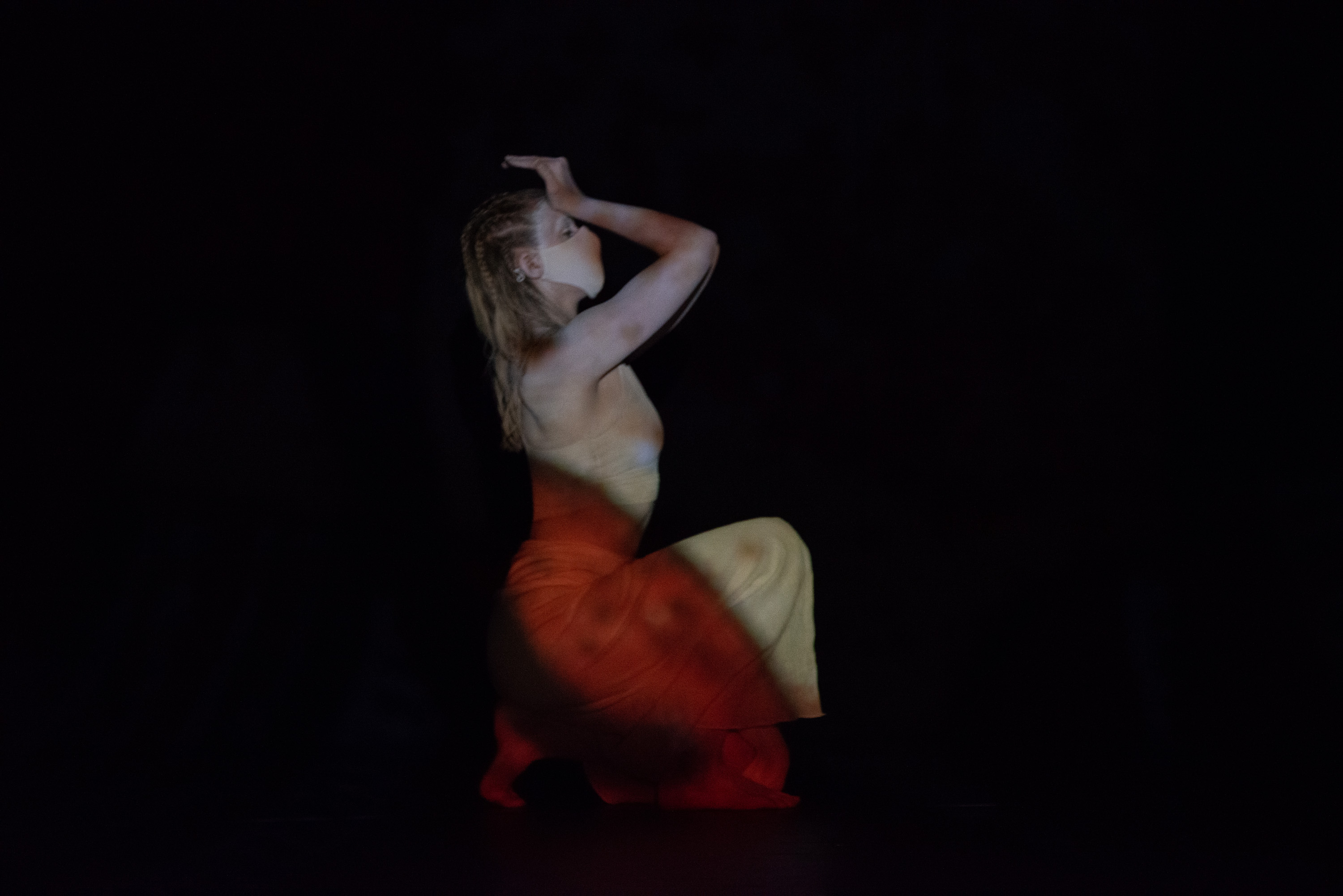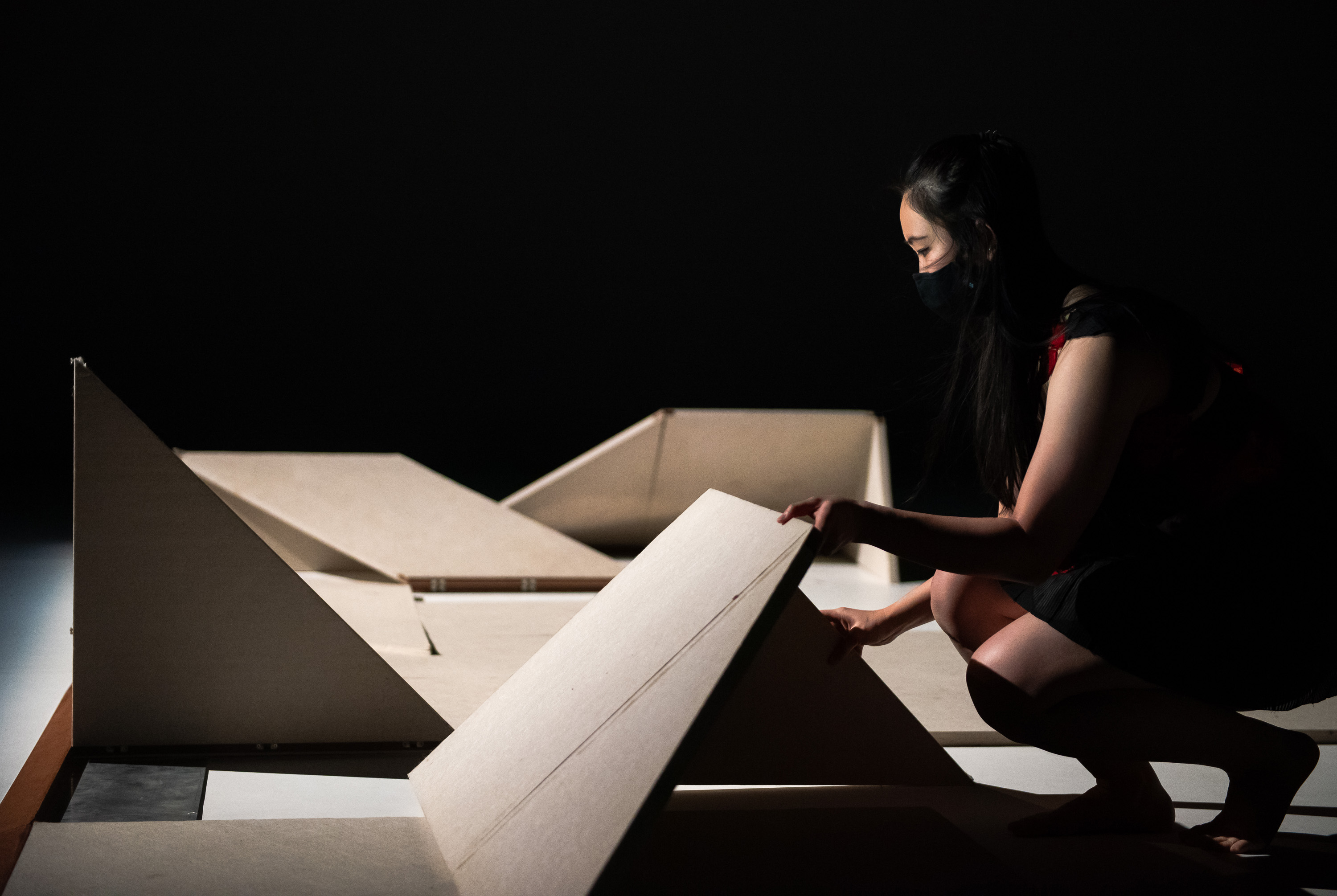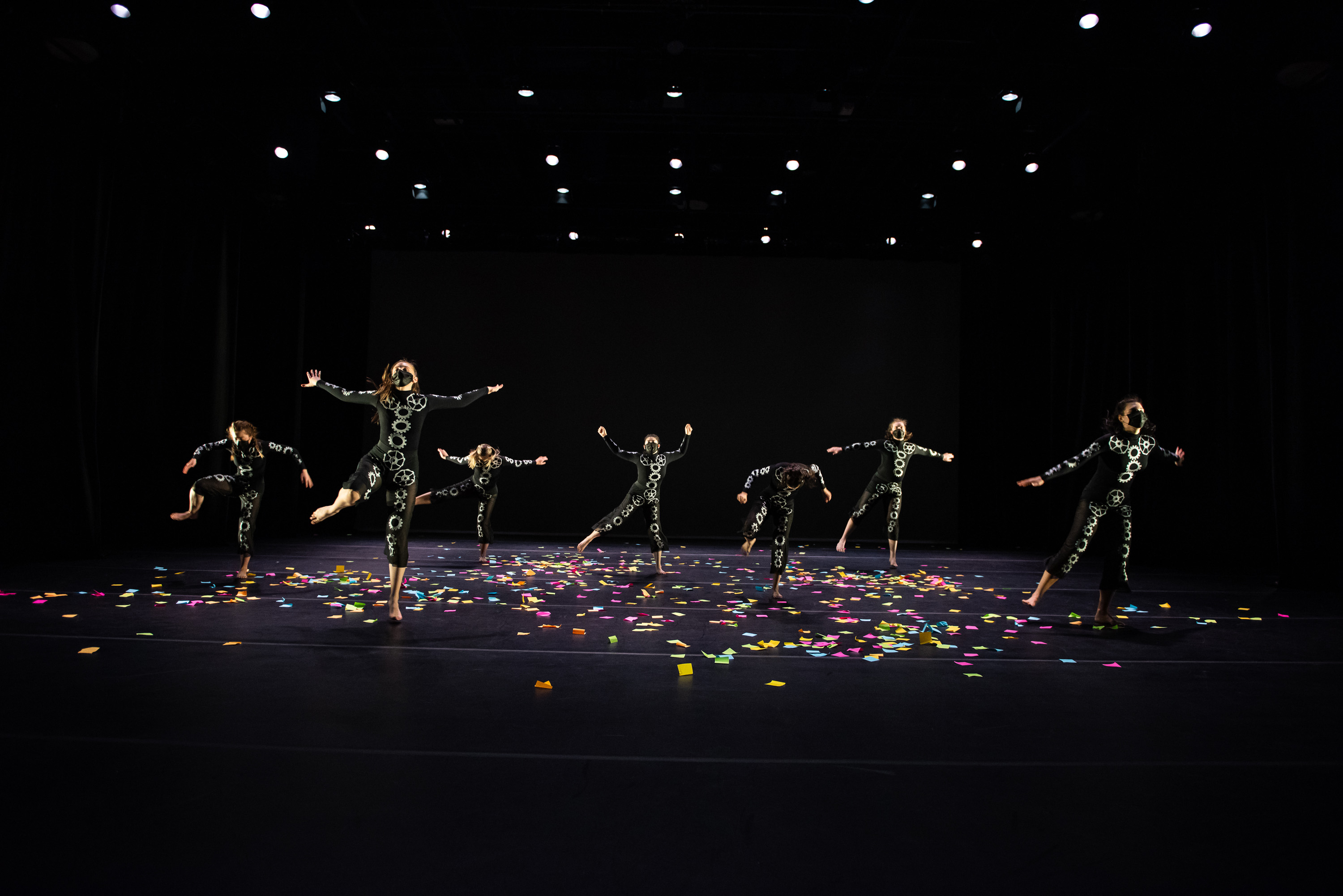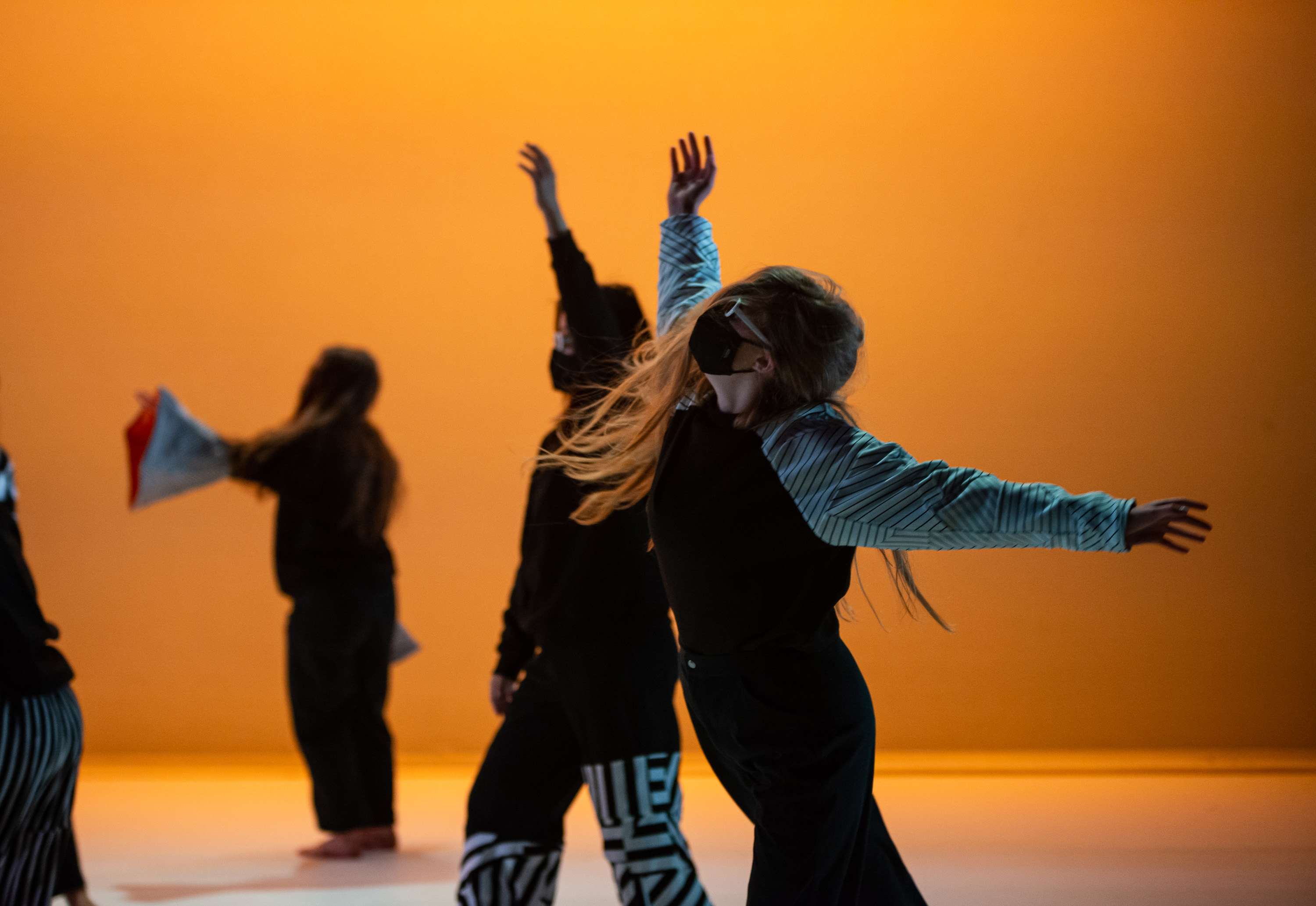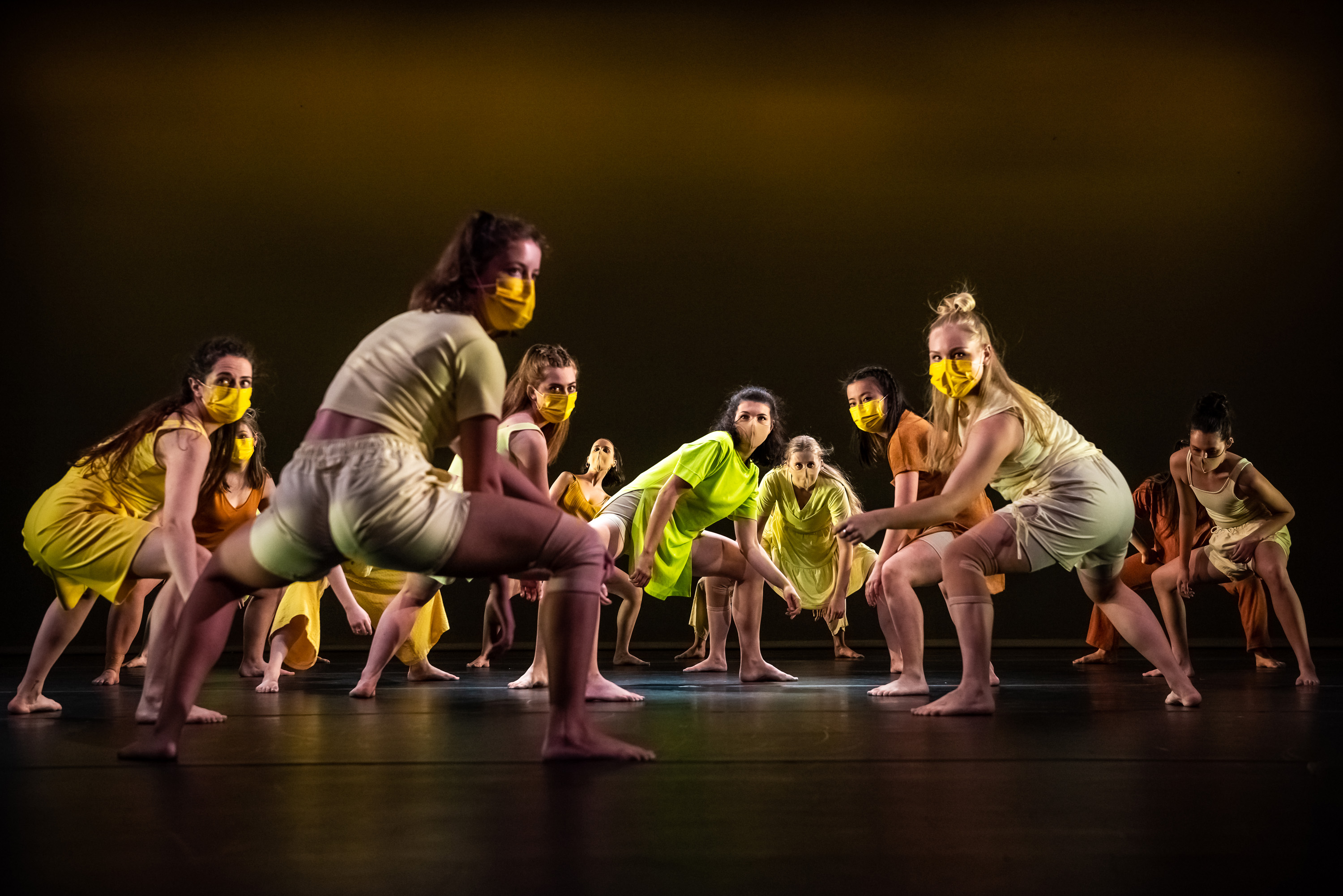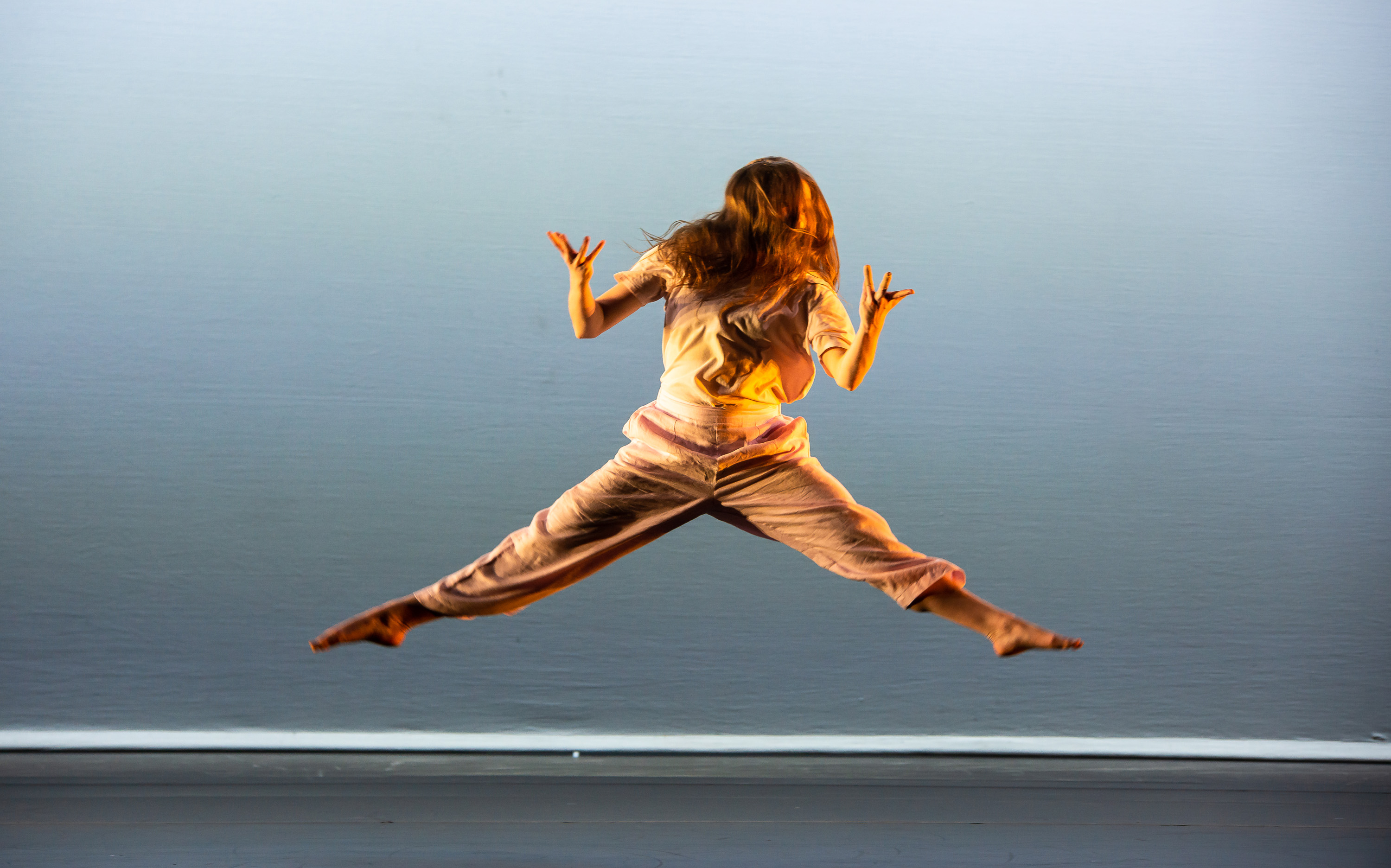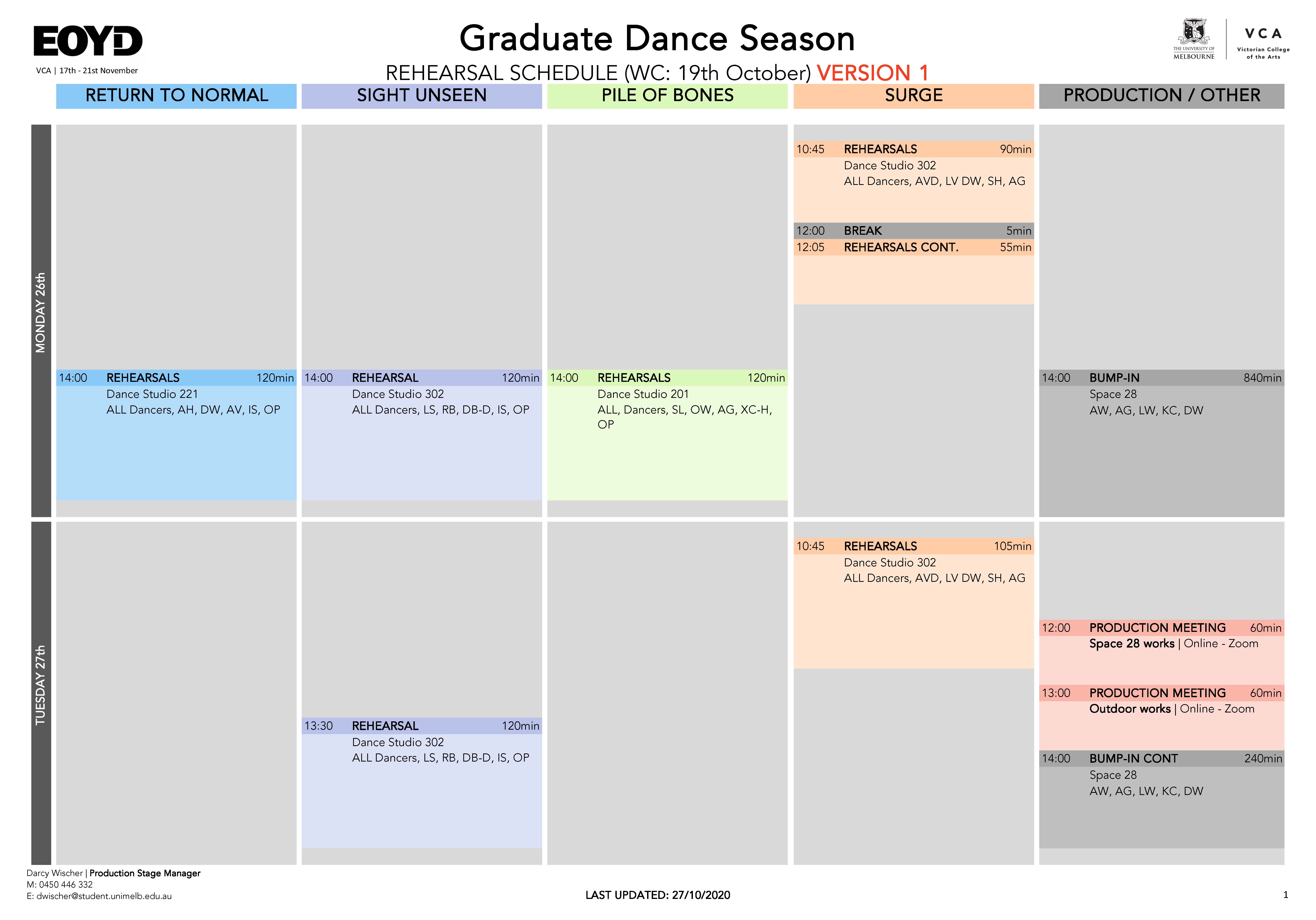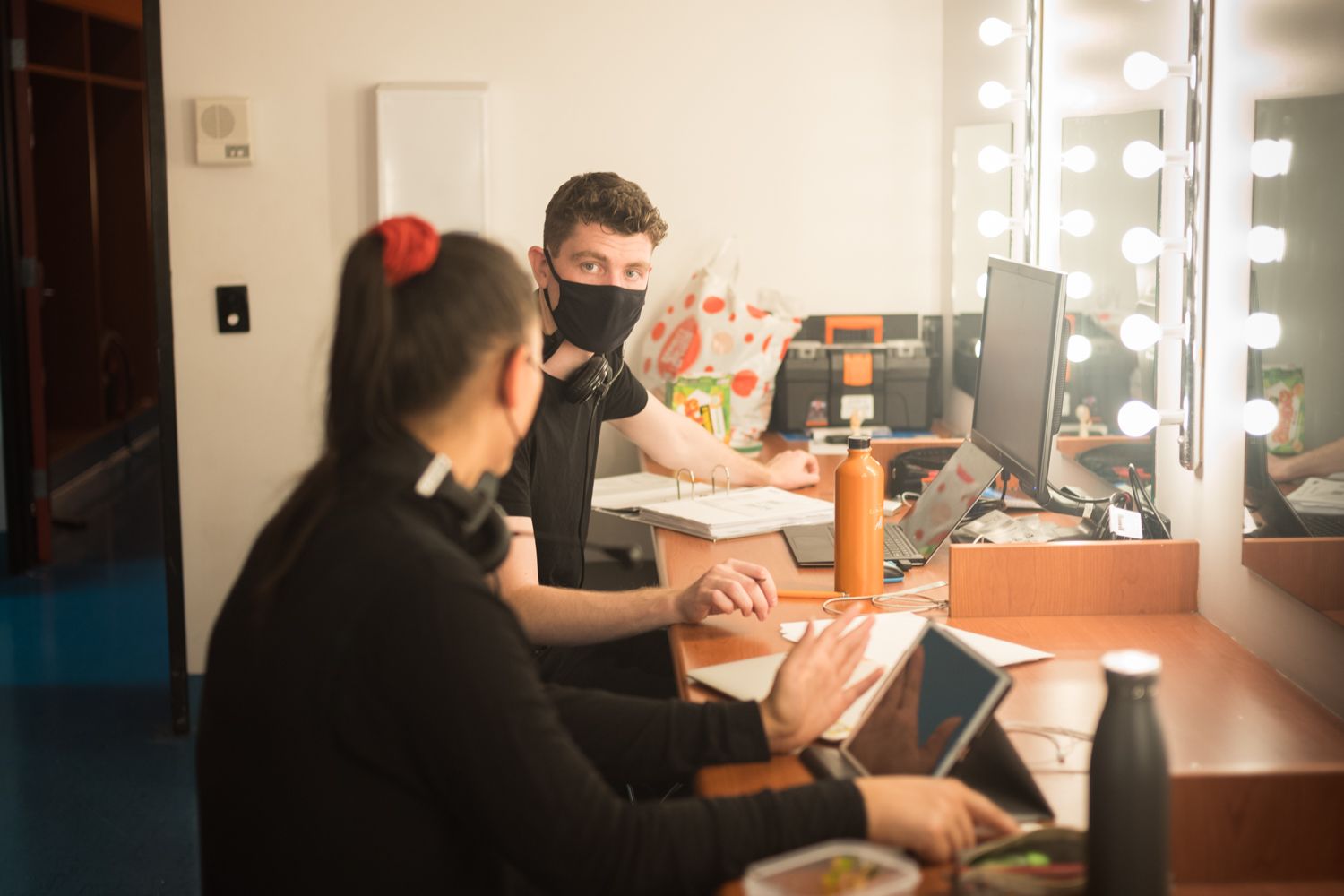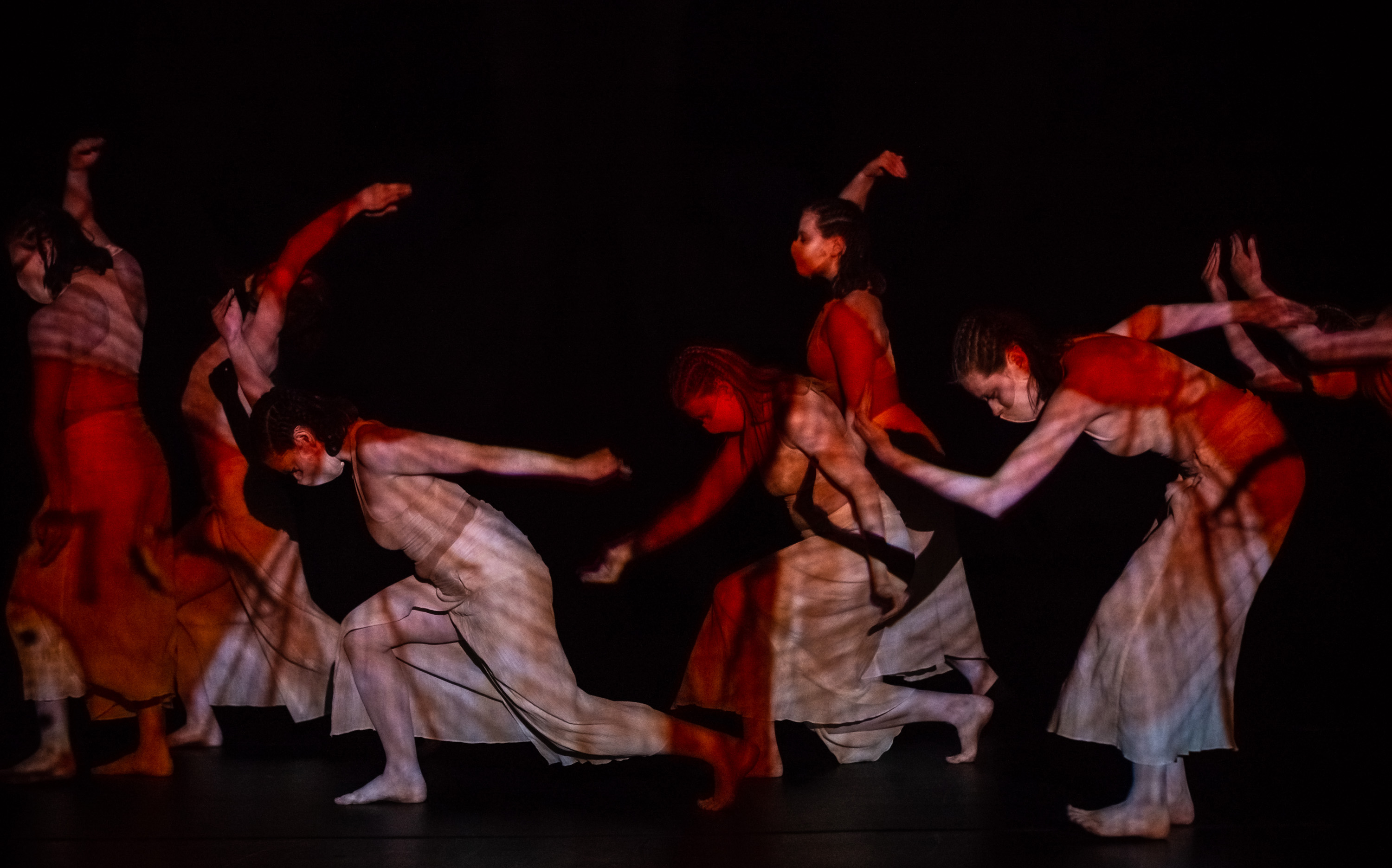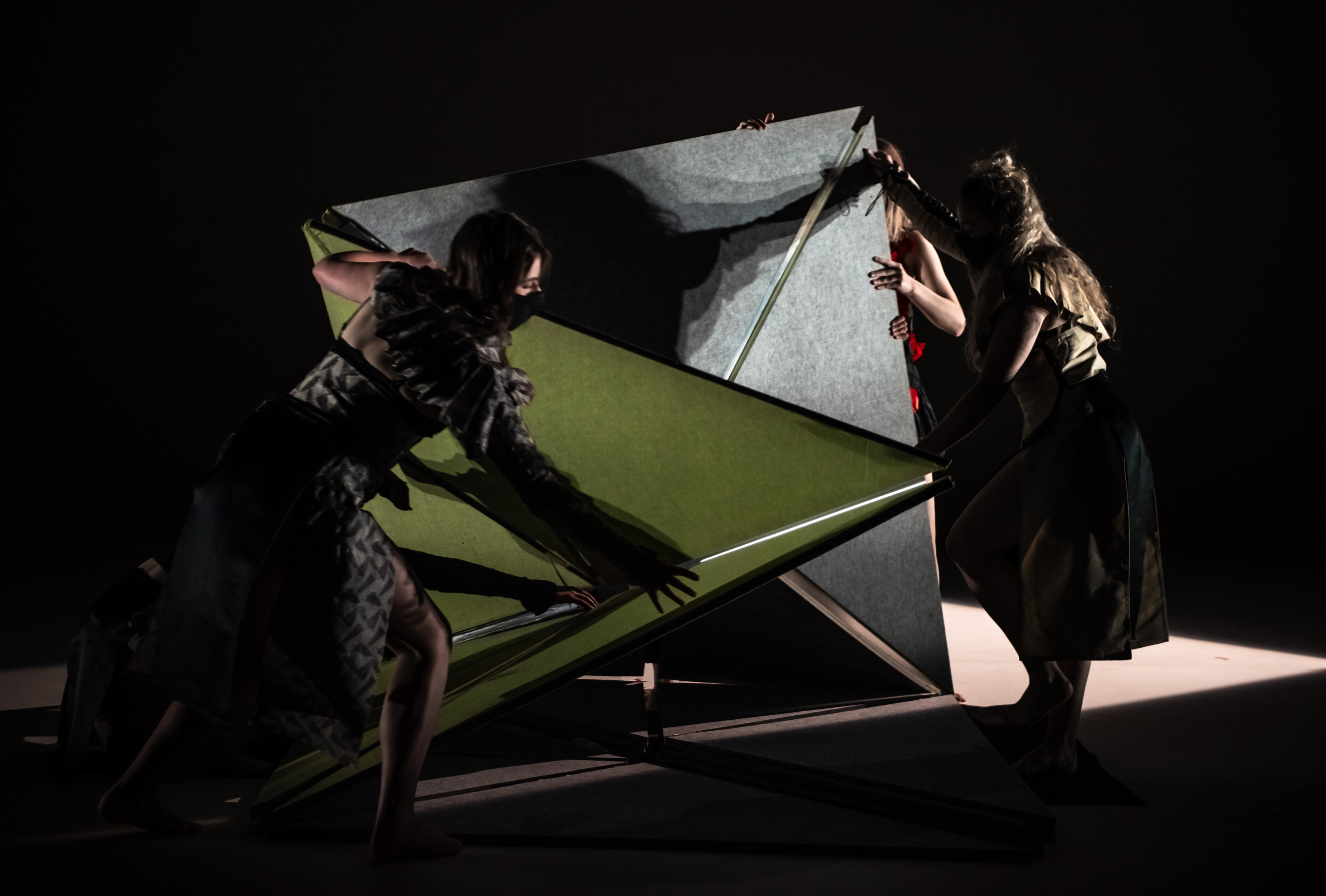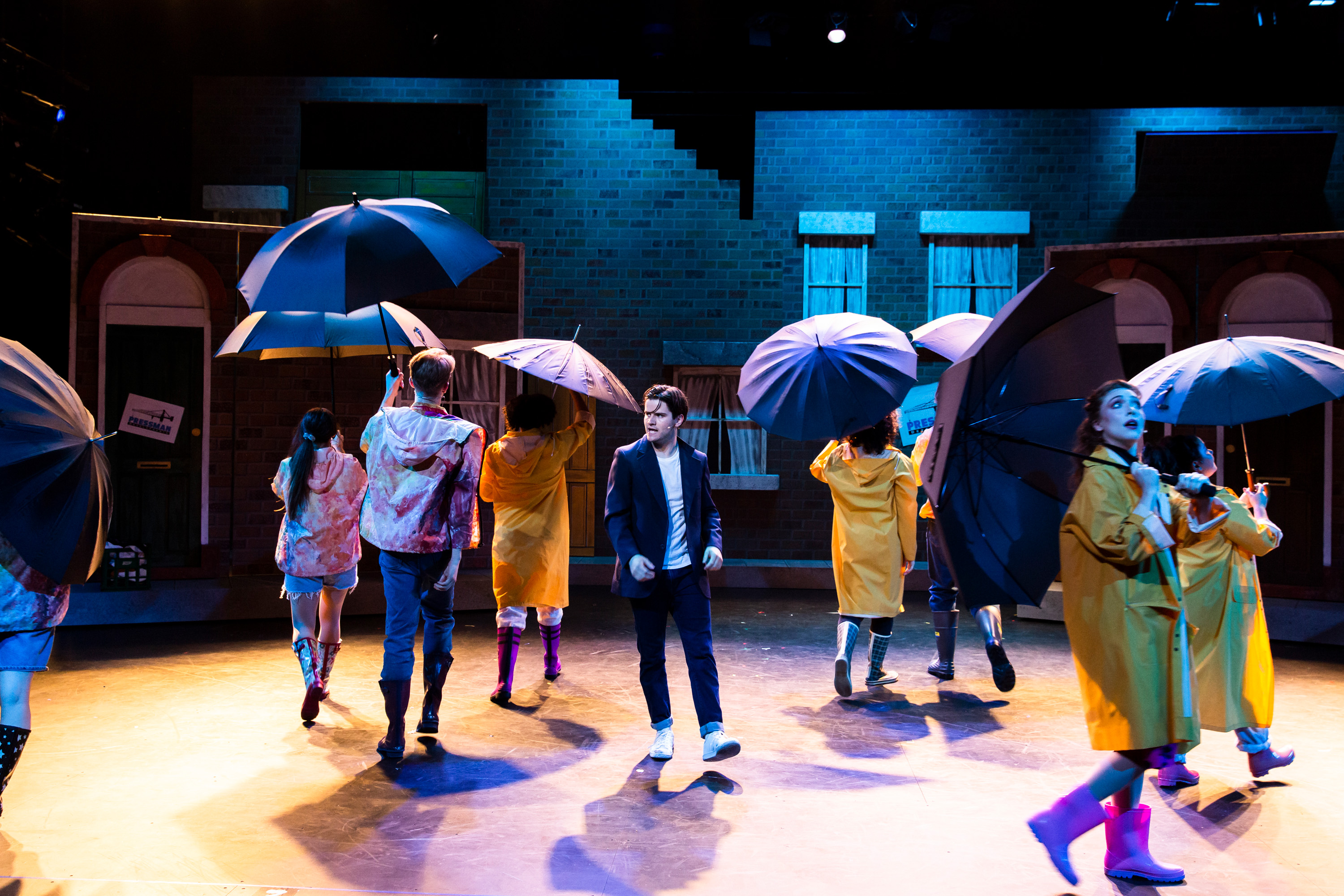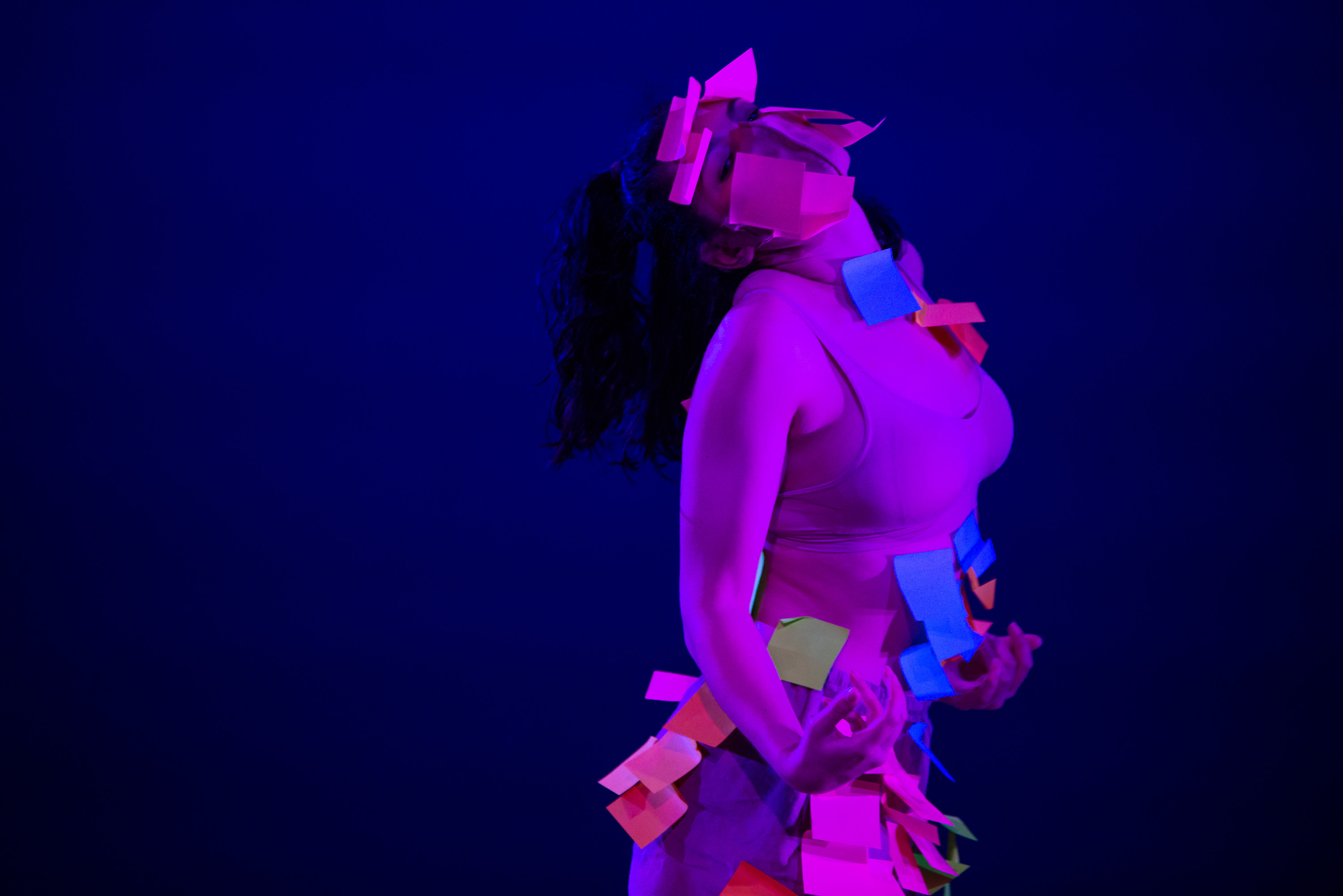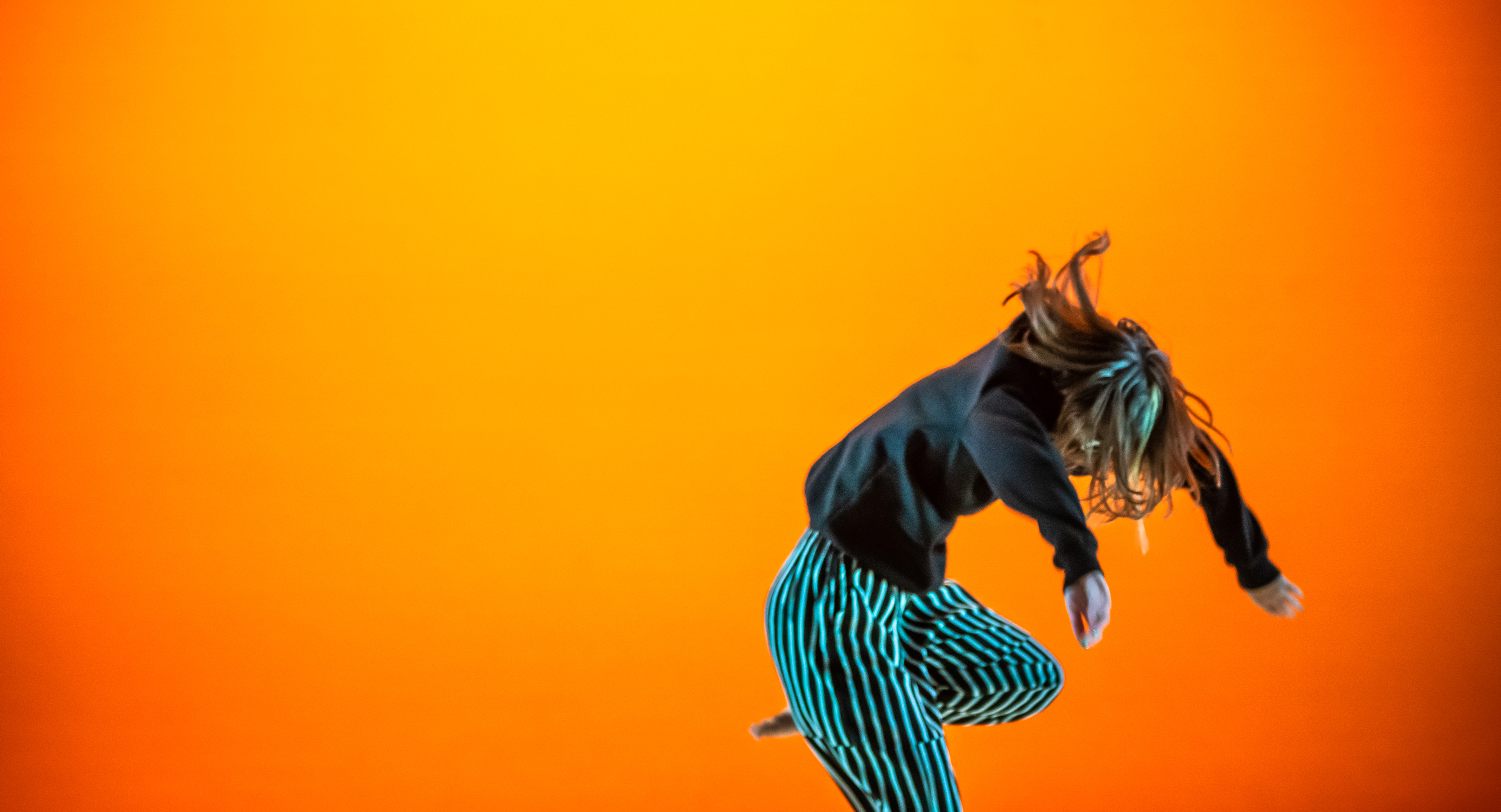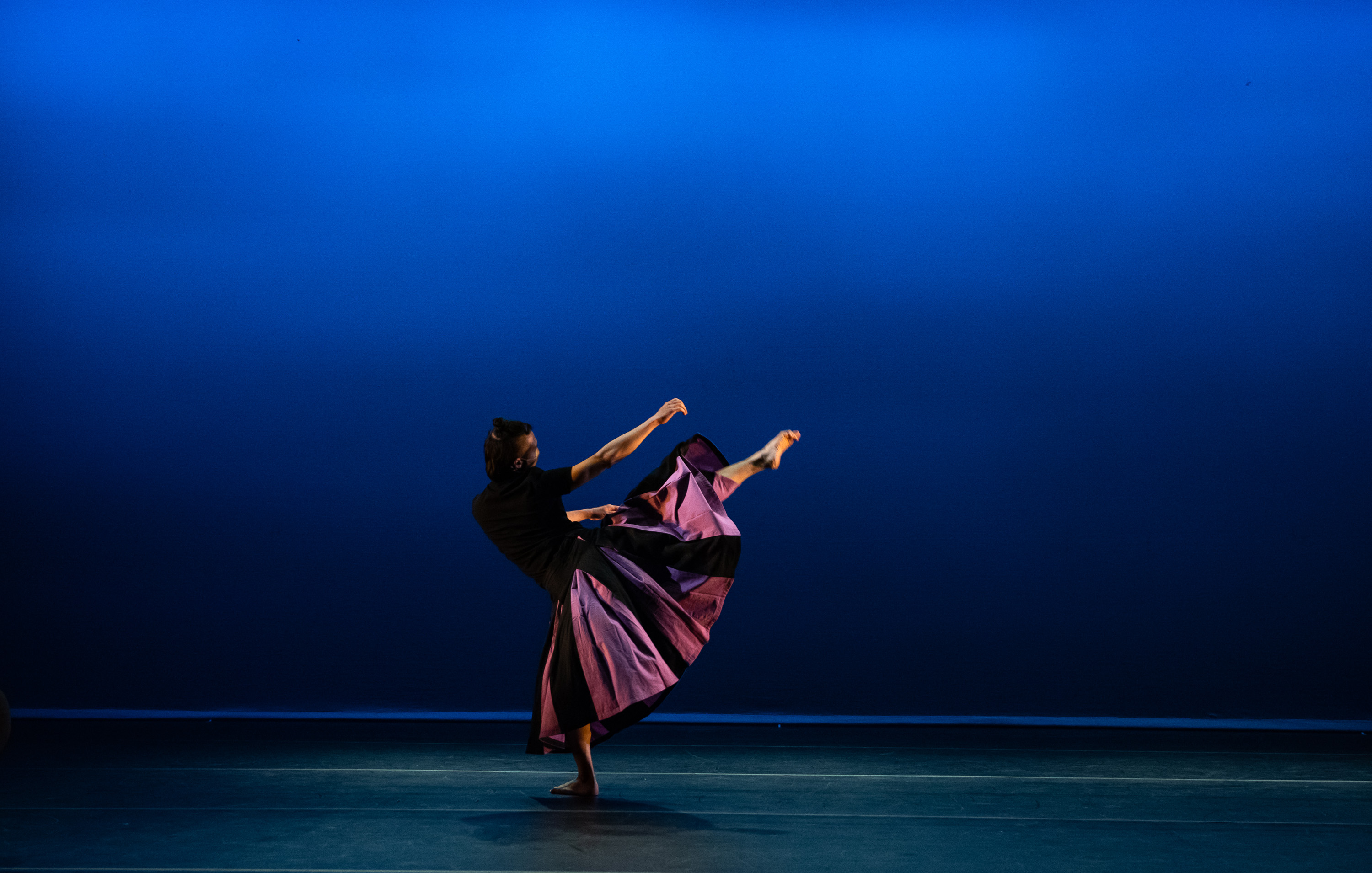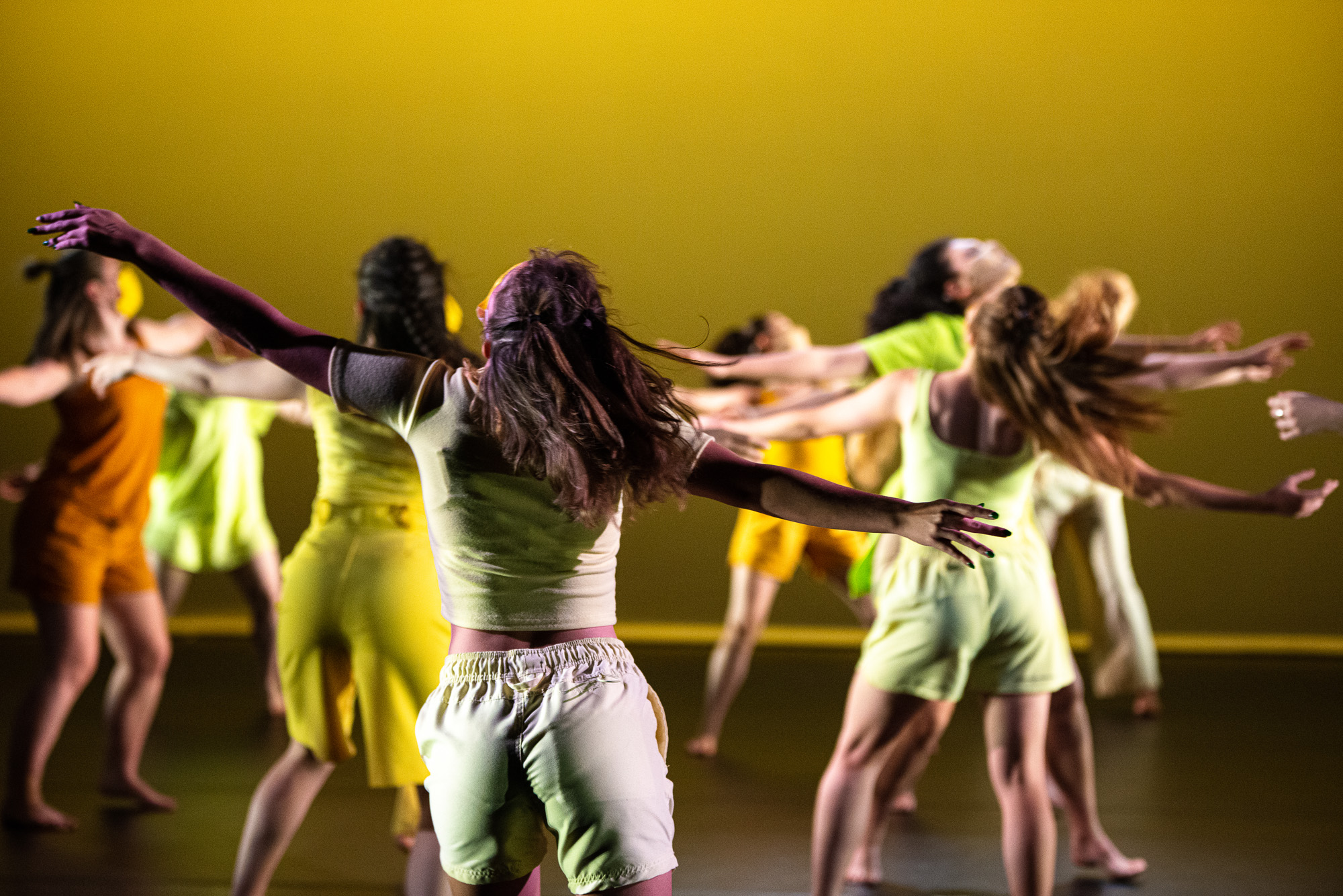Search
Results
Nuti
"Nuti was originally created in 1990 for the Australian National Gallery’s exhibition of Ancient Treasures from the British Museum. Nuti refers to the life force – the active power which bestows life on all creatures and plants. Themes of light and darkness, life on Earth and the afterlife, and creation and destruction were portrayed in Nuti.
"When it was performed originally in the gallery’s theatre, the audience penetrated into a dark tomb-like space which became animated slowly by ever-changing bas reliefs and long forgotten gestures from female rituals of the period. The all-female cast was partially naked and their alabaster skin was bathed in brilliantly coloured projections with Colin Offord playing his flute, gongs and extraordinary mouth bow live on stage.
"What a wonderful opportunity to remount Nuti 30 years later. I was fortunate to spend a short time with the dancers in the studio but, due to the COVID-19 outbreak, the dancers found themselves isolated in their homes for months, with the internet as their only link to each other. As a result, Nuti 2020 is not the same – due to the health restrictions, dancers had to wear masks; they also had to cover their chests and practice social distancing.
"Despite all these hindrances, I think what the dancers have achieved, under the direction and guidance of Vincent Crowley, is remarkable. I want to thank everybody involved in the production for bringing back to life this original work and offering it to new eyes."
— Meryl Tankard
Origami
"This performance of Origami experiments with a choreographic refolding of the works original architectural set designs and production elements forming a new aperture of spatial constructions and narratives. The students embarked upon an unexpected journey in the remounting of Origami (2006). Enforced Coronavirus lockdowns saw the students depart from the VCA studios to a process of remounting the work as housebound choreo-reconstruction.
"Becoming tourists in their own homes, the students experimented with reimaging the work’s origami inspired architectural designs and thematised Japanese customs in their isolation environments. Within corridors, living rooms, furnishings, driveways, backyards, surfaces and garages a new architectural deposit of origami materialised.
"Emerging from isolation, the students began remounting the work as process of improvisational tasking with the sceno-architectural elements of the original work.
"What you are viewing is a nuanced investigation of choreographic refoldings that suggests a new architectural blueprint of the original. Although the work was distanced from the possibility of achieving a true replication, the students have reconstructed a new inhabitation from the original concepts. I would like to thank each and every student for their focused commitment and open-mindedness in exploring the possibilities of achieving an innovative architectural refold of Origami (2006) under such challenging conditions."
— Phillip Adams
Pile of Bones
"We started this creative process back in August, in the depths of lockdown. All of us in our bedrooms, kitchens, hallways – crashing into furniture and dodging pets and housemates. We couldn't have known at that point how long we'd be trying to rehearse on Zoom, and in a way it's lucky we didn't, because weeks turned to months and at one stage we weren't sure if we were ever going to see each other in the flesh and make it into a studio together. But hooray, we finally did! And the euphoria of that first day back in the studio was very special.
"The dancers have worked with discipline, curiosity and creativity across the entire process of learning and re-working Pile of Bones, a work of mine from 2017. We worked hard to recreate the intricacy and speed of the big, relentless 'unison' section and reworked the Post It and Chairs sections, making them their own. It's been such an honour to watch the dancers, designers and technical team navigate the immense challenges with such grace, smarts and good humour, and to watch it come together so rapidly. Massive congrats and thanks to you all."
— Stephanie Lake
Return to Normal
"In a year where everyone has had to become accustomed to uncertainty, the feeling of starting and stopping has become a condition of living. This dance was filmed as three separate passages of continuous time, but the film is marked by regular interruptions of 0.5 second intervals. The continuity of movement is perpetually broken, and a new choreography is made in triplets of frames. Three possibilities of choreography produce a fourth, and the layering allows multiple potentials to exist simultaneously like a chimera that manifests as something real. I feel a sensation of optimism when I imagine we can be in one, two or three places at once.
"I want to thank all at the VCA, the designers and crew for their fantastic work, and especially thank the wonderful, thoughtful, intelligent dancers who have all kept the fire in their bellies through a difficult year. They’ve risen to the great challenge of persevering through. 2020 will be a year that won’t easily be forgotten."
— Antony Hamilton
Sight Unseen
"Sight Unseen: without the opportunity to look at the object in question beforehand.
This is a piece in the form of an imaginary film. My inspiration is Fellini’s ‘8 ½’.
Tasked with creating a work through disembodied and disconcerting means, this piece became focussed on illuminating dancing that emanates from often imperceptible spaces, and the volume of the body’s interior. As each dancer engaged with their own “unseen” movement capacities, more of their individually embodied dancing was revealed. The practice of revealing and concealing according to context weaves the dancers’ individual lineages into the work, questioning perceptions of what it is that is “seen” and how this is authenticated…individually, communally and societally.
My deep appreciation and thanks to the dancers for their generosity of spirit throughout the process, to Rachel and the designers for bringing to life the interior and exterior landscapes for the dancing to inhabit, to the chickens of Buster Hollow (NY) and the birds of many other lands, and to the wonderful network of seen and unseen people who have contributed to this work."
— Linda Sastradipradja
Surge
"Moving from order to chaos, from conformity to abandonment, in SURGE some 23 dancers join forces to control an ever-shifting equilibrium. Their shared territory is tested, challenged and negotiated from within, driven by an unstoppable desire to evolve. A group that wells up and moves forward.
"SURGE is the second instalment of a large group work for dance students. Timing, spacing and cueing are in constant negotiation, inviting the dancers to blend and stand out, in constant collaboration and exchange."
— Anouk van Dijk
WOW
"WOW is a work evolved from the particular and challenging circumstances of its making. Working over Zoom, eventually in the studio, then finally in the theatre, we constructed a dance for and with the second-year dancers.
"WOW brings these women together in their separateness, hinting at resonances of that time – memories that are confined to their hands and eyes, a restricted dimensionality, and a quiet intensity of focus that evokes a sort-of continual processing, or a repeated playing out of singular moments. The dancers have been exemplary throughout this process, and we want to thank all of them for showing up, for their generosity (to us and to each other) and for their many and marvellous contributions to this work."
— Alice Dixon and Caroline Meaden
Darcy Wischer
Stage Manager 'Graduate Dance Season' - Schedule sample
Darcy Wischer
Stage Management preparation: 'Graduate Dance Season 2020'
Emma Vize
Head Electrician Dance On - Production week
Nuti - Dance Production
Origami - Dance Production
Our House - Dance Production
Pile of Bones - Dance Production
Return to Normal - Dance Production
Sight Unseen - Dance Production
Surge - Dance Production
WOW - Dance Production
